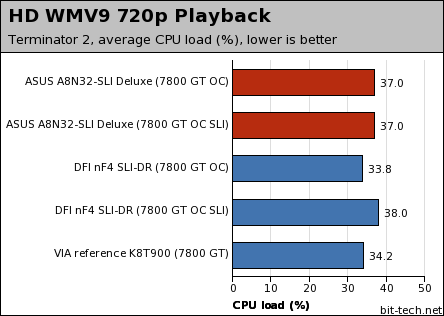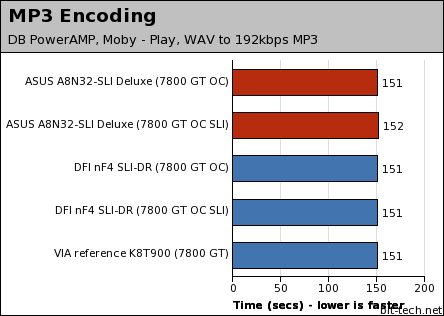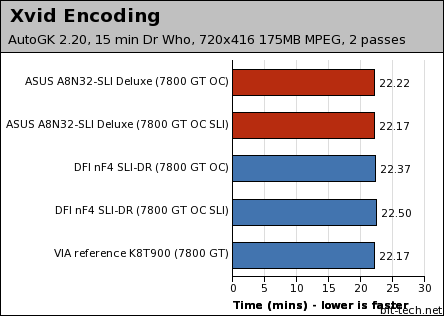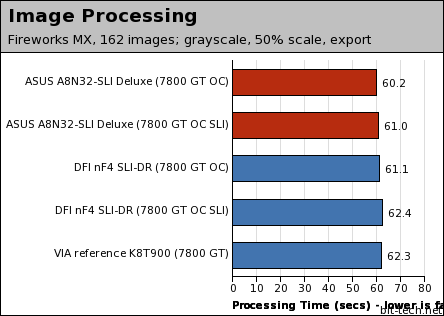General Performance:
Unlike the DFI nF4 SLI-DR, the CPU utilisation on the ASUS A8N32-SLI during playback of our WMV9 High Definition stream was no different between single card mode and SLI mode. The utilisation was slightly higher than the DFI nF4 in single card mode, but the ASUS A8N32-SLI in SLI mode didn't have a CPU overhead, meaning that the DFI had higher CPU utilisation when using two video cards.
There was a one second increase in encode time when the A8N32-SLI was running with two video cards installed, but everything else was as expected.
The A8N32-SLI was faster than the DFI nF4 SLI-DR in our Xvid encoding test, but the VIA K8T900 reference board was still the fastest encoder in single video card mode. In SLI mode, the A8N32-SLI was able to match the encode time of the K8T900 board, while the DFI was actually slightly slower with two video cards installed.
Interestingly, we found that the A8N32-SLI was not quite as good at multitasking as the other boards, with the DFI nF4 SLI-DR being the pick of the bunch. SLI mode proved to be slightly faster on both nForce4 SLI boards, but we're not quite sure why the ASUS A8N32-SLI is so much slower than the other two.
The ASUS A8N32-SLI was back on song in our image manipulation test, being slightly faster than the other boards - in single card mode, it processed our batch of images nearly a second faster over the course of our minute long test. In SLI mode, the board was over a second faster than the DFI nF4 SLI-DR.












Want to comment? Please log in.